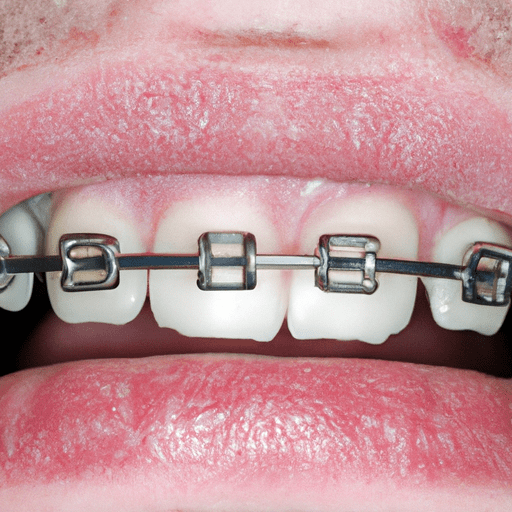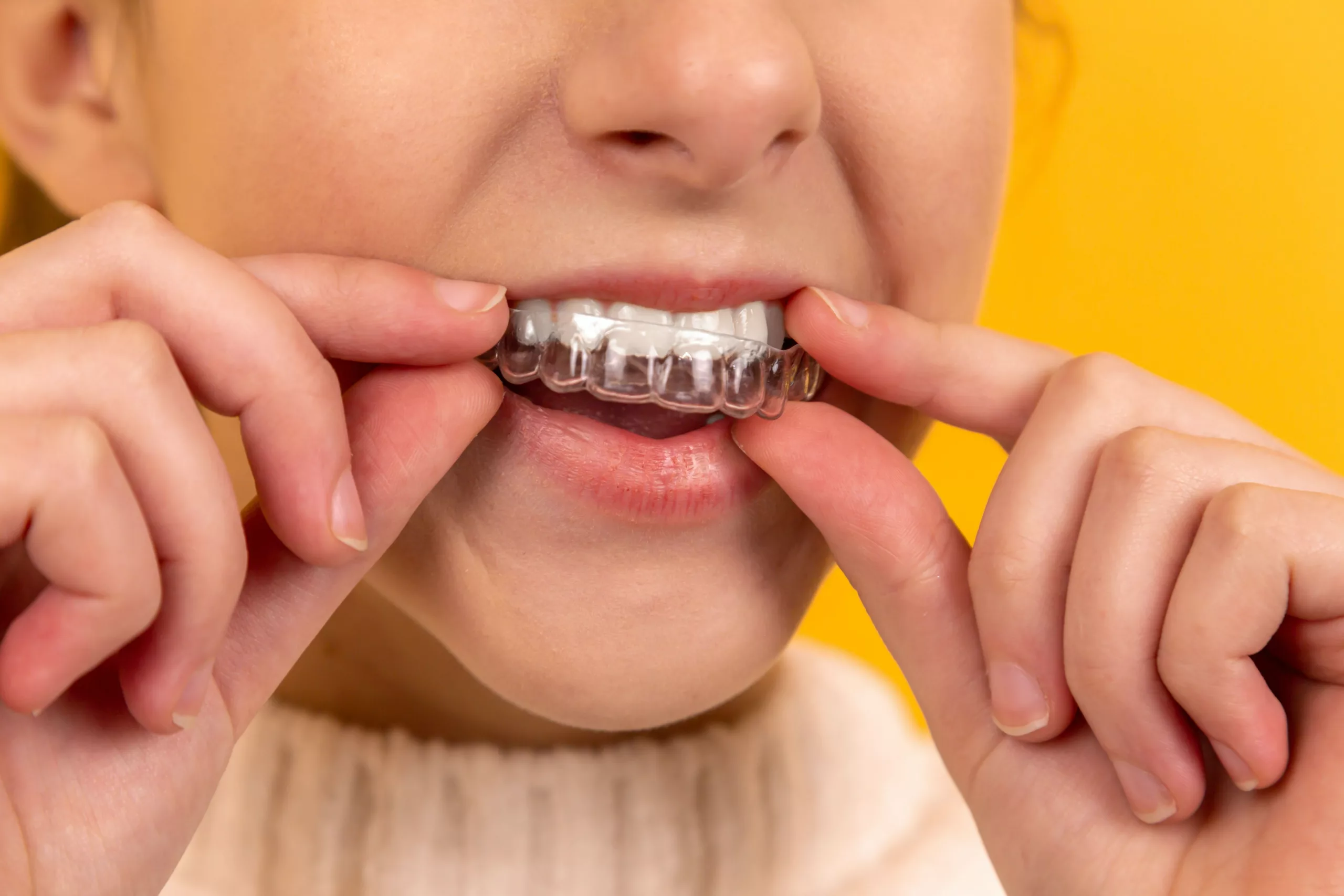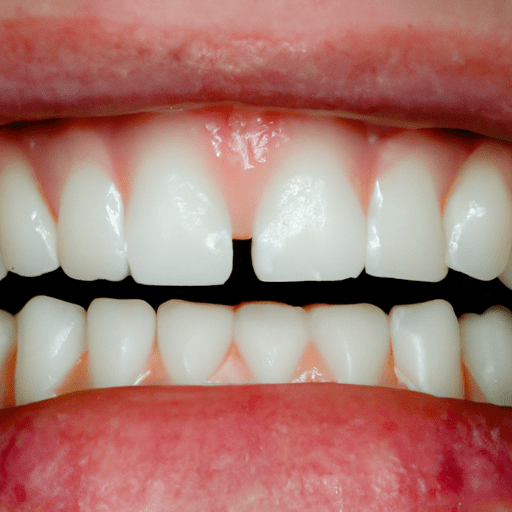Imagine finally getting braces to straighten your teeth and achieve that perfect smile, only to find out that they might be causing you to snore. Yes, you read that right – braces and snoring are more connected than you could have ever imagined. While the thought of snores being a result of braces may seem perplexing, let’s delve into the fascinating relationship between these two seemingly unrelated things and discover how braces can sometimes be the surprising culprit behind those late-night symphonies.
Understanding Braces and Their Function
Braces are orthodontic devices that are used to straighten and align teeth. They consist of brackets, wires, and bands that work together to exert gentle pressure on the teeth, gradually moving them into their desired positions. Braces can be made from different materials, such as metal, ceramic, or plastic, and they come in various types, including traditional braces, invisible braces, lingual braces, and self-ligating braces.
Different types of braces
- Traditional braces: These are the most common type of braces and consist of metal brackets and wires.
- Invisible braces: Also known as clear aligners, these are transparent trays that fit over the teeth and are virtually invisible.
- Lingual braces: These braces are attached to the back of the teeth, making them less visible from the front.
- Self-ligating braces: These braces use a specialized bracket with a built-in mechanism to hold the wire, eliminating the need for elastic bands.
The purpose of teeth alignment
The primary purpose of wearing braces is to correct teeth misalignment and achieve a straighter smile. Crooked or crowded teeth can lead to various issues, including difficulty in maintaining oral hygiene, increased risk of tooth decay and gum disease, abnormal wear on teeth, and even speech problems. By properly aligning the teeth, braces can improve both the appearance and function of the teeth, leading to better oral health overall.
Duration of wearing braces
The duration of wearing braces varies from person to person and depends on the severity of the tooth misalignment. On average, treatment with braces can take around 1-3 years. During this time, regular adjustments are made to the braces to gradually move the teeth into their desired positions. It is important to follow the orthodontist’s instructions and attend all scheduled appointments to ensure the best results in the shortest possible time.
The Anatomy of Snoring
Snoring is a common sleep disorder characterized by the production of loud, harsh sounds during sleep. It occurs when the flow of air through the mouth and nose is partially obstructed during sleep, causing the surrounding tissues to vibrate and produce the snoring sound. Understanding the anatomy of snoring can help shed light on its causes and potential health implications.
Causes of snoring
Snoring can have various causes, including:
- Obstruction of the nasal passages due to allergies, sinus infections, or anatomical abnormalities.
- Weakness or obstruction of the throat muscles, leading to the narrowing of the airway.
- Excessive relaxation of the tongue or throat tissues during sleep.
- Obesity or excess weight, which can contribute to the narrowing of the airway.
The physical mechanism behind snoring
During sleep, the relaxation of the muscles in the throat and tongue can cause the airway to become partially blocked. As a result, the airflow becomes turbulent, causing the tissues in the airway to vibrate and produce the characteristic snoring sound. The intensity and volume of snoring can vary depending on the severity of the obstruction and the individual’s sleep position.
Health implications of snoring
Snoring is not only disruptive to the sleep of the individual snoring but can also affect the quality of sleep for their partner or household members. Additionally, snoring has been associated with various health risks, including:
- Daytime fatigue and sleepiness.
- Increased risk of cardiovascular diseases, such as hypertension and stroke.
- Strained relationships and disturbances in marital or family life.
- Reduced cognitive function and concentration.
The Link Between Braces and Snoring
With the understanding of braces and snoring, it is natural to wonder if there is a connection between the two. While braces are primarily used for teeth alignment, some individuals have reported an increase in snoring during their orthodontic treatment. It is necessary to explore this link further to determine if braces can indeed cause or contribute to snoring.
Do braces actually cause snoring?
There is no direct evidence suggesting that braces themselves cause snoring. However, certain changes that occur in the mouth and surrounding tissues during orthodontic treatment could potentially contribute to snoring. These changes include the shift in mouth position, alterations in tongue posture, and temporary changes in the jaw alignment as the teeth are being moved.
Studies investigating the connection
Although limited, there have been a few studies conducted to investigate the possible link between braces and snoring. One study published in the Journal of Oral and Maxillofacial Surgery found that patients who wore braces reported an increase in snoring during their treatment. However, the study did not establish a definitive cause-and-effect relationship.
Understanding the relation between mouth anatomy and snoring
The position and alignment of the teeth, as well as the shape and size of the oral cavity, can influence the airflow during sleep. Any changes in these factors, as a result of wearing braces, can potentially impact the airflow and contribute to snoring. Further research is needed to better understand the complex relationship between mouth anatomy, orthodontic treatment, and snoring.
How Braces May Contribute to Snoring
While braces do not directly cause snoring, they can potentially contribute to snoring in several ways. These potential contributions are related to the changes in mouth position caused by braces, their impact on the respiratory tract, and their role in obstructive sleep apnea.
Change in mouth position caused by braces
As braces gradually move the teeth into their desired positions, the mouth undergoes changes in posture and alignment. These changes can affect the position of the tongue and other soft tissues in the oral cavity, potentially narrowing the airway and increasing the likelihood of snoring.
Impact on the respiratory tract
Braces can alter the shape and size of the oral cavity, which can impact the flow of air through the respiratory tract. This alteration in the airflow dynamics can contribute to the development or aggravation of snoring.
The role of braces in obstructive sleep apnea
Obstructive sleep apnea is a serious sleep disorder characterized by repetitive episodes of complete or partial airway obstruction during sleep. While braces alone are not a cause of obstructive sleep apnea, they can potentially worsen the symptoms in individuals already diagnosed with this condition. The changes in mouth position and the obstruction caused by braces can further exacerbate the obstruction and disrupt breathing during sleep.
The Role of Dental and Orthodontic Treatments in Addressing Snoring
Dental and orthodontic treatments can play a significant role in addressing snoring, especially when it is related to anatomical factors in the mouth and throat. Various approaches, including the use of braces, can be employed to reduce snoring and improve the quality of sleep for individuals suffering from this sleep disorder.
Orthodontic approaches towards snoring reduction
Orthodontic treatments, such as braces, can be used to address snoring by correcting misalignments and creating proper spacing in the oral cavity. By improving the positioning of the jaw, tongue, and other oral tissues, braces can help widen the airway, reducing the obstruction and the likelihood of snoring.
How braces can be part of a sleep apnea treatment plan
In cases where snoring is associated with obstructive sleep apnea, braces can be used as part of a comprehensive treatment plan. This plan may involve collaborating with sleep medicine specialists and orthodontists to develop a customized treatment approach. Braces, along with other interventions, can help alleviate the symptoms of sleep apnea and improve overall breathing during sleep.
Other dental treatments for snoring
In addition to braces, there are other dental treatments that can be used to address snoring. These include the use of oral appliances, such as splints or mouthguards, that help reposition the jaw and keep the airway open during sleep. These appliances can be used alongside or as an alternative to braces, depending on the specific needs and preferences of the individual.
Preventing Snoring During Orthodontic Treatment
If you are undergoing orthodontic treatment with braces and are concerned about snoring, there are several steps you can take to minimize the likelihood of snoring during this period.
Choosing the right type of braces
Different types of braces can have varying effects on snoring. Traditional braces, which include metal brackets and wires, may have a greater impact on the oral anatomy and airflow compared to invisible or lingual braces. Discussing your concerns with your orthodontist can help you choose the most suitable type of braces for your specific needs.
Proper usage and care of braces
Following your orthodontist’s instructions regarding the usage and care of braces is essential. Maintaining good oral hygiene, attending regular adjustments, and wearing any prescribed appliances or elastics correctly can help minimize any potential disruptions in the oral anatomy and reduce the chances of snoring.
Working with medical professionals for customized treatment plans
It is crucial to work closely with both your orthodontist and any other medical professionals involved in your treatment. By sharing your concerns about snoring and collaborating with them, you can develop a customized treatment plan that takes into account your unique needs and aims to minimize the likelihood of snoring while still achieving the desired teeth alignment.
Alternative Orthodontic Appliances and their Effect on Snoring
While braces are commonly used in orthodontic treatment, there are alternative appliances that can also be effective in addressing snoring. These appliances focus on repositioning the jaw and tongue to improve the airflow during sleep.
Mandibular advancement devices
Mandibular advancement devices (MADs) are oral appliances that are worn during sleep. They work by repositioning the lower jaw and tongue forward, which helps keep the airway open and reduces snoring. MADs can be custom-made to fit the individual’s mouth and may be a viable alternative to braces in certain cases.
Tongue retaining devices
Tongue retaining devices (TRDs) are another type of oral appliance that can address snoring. They hold the tongue in a forward position, helping to prevent it from collapsing and obstructing the airway. TRDs can be beneficial for individuals who experience snoring due to the tongue obstructing the air passage.
Palatal lift appliances
Palatal lift appliances are commonly used in the treatment of certain speech disorders, but they can also be utilized to minimize snoring. These appliances help elevate the soft palate and prevent it from blocking the airway during sleep. Palatal lift appliances can be an alternative option for individuals who are unable to use traditional braces or other orthodontic appliances.
Pediatric Snoring and Orthodontics
Snoring is not limited to adults; it can also affect children, and orthodontic treatment can play a role in addressing snoring in pediatric patients.
Potential impact of early orthodontic treatment on snoring
Early orthodontic treatment, known as interceptive orthodontics, focuses on addressing orthodontic issues in children before they become more severe. By correcting misalignments and creating proper spacing in the mouth, interceptive orthodontics can help prevent or reduce snoring in pediatric patients.
Braces in children – impact on snoring
While braces are commonly used in orthodontic treatment for children, there is limited research on their direct impact on snoring in this population. However, by improving dental and jaw alignment, braces can potentially contribute to reducing snoring in children and improve their overall quality of sleep.
When to seek medical guidance
If your child is snoring persistently, it is important to seek medical guidance, including consultation with an orthodontist. Snoring in children can be a sign of underlying issues, such as obstructive sleep apnea or anatomical abnormalities. Early intervention and appropriate orthodontic treatment can help address these concerns and alleviate snoring in children.
Understanding The Benefits and Risks of Different Types of Braces
When considering orthodontic treatment with braces, it is essential to understand the benefits and potential risks associated with different types of braces.
Traditional braces
Traditional braces, made from metal brackets and wires, are widely used and offer several benefits. They are effective in correcting complex orthodontic issues, and their reliability and durability make them suitable for various cases. However, traditional braces can be more visible compared to other types and may require extra attention to oral hygiene.
Invisible braces
Invisible braces, also known as clear aligners, offer the advantage of being virtually unnoticeable. They are made from clear plastic trays that fit snugly over the teeth, gradually shifting them into alignment. Invisible braces are removable, allowing for easier oral hygiene management, and offer increased comfort compared to traditional braces. However, their suitability depends on the complexity of the orthodontic issues and the patient’s commitment to wearing them consistently.
Lingual braces
Lingual braces are similar to traditional braces but with one significant difference – they are attached to the back of the teeth, making them less visible from the front. Lingual braces provide effective teeth alignment while offering a more discreet option compared to traditional braces. However, they may require a longer adjustment period and can be more challenging to clean.
Self-Ligating braces
Self-ligating braces function similarly to traditional braces but without the need for elastic bands to hold the wire in place. Instead, they utilize a specialized bracket with a built-in mechanism to secure the wire. Self-ligating braces can offer faster treatment times, reduced discomfort, and easier maintenance compared to traditional braces. However, they may not be suitable for all cases and can be more expensive.
Frequently Asked Questions About Braces and Snoring
Can braces cause snoring?
While braces themselves do not directly cause snoring, there are changes that occur in the mouth and surrounding tissues during orthodontic treatment that can potentially contribute to snoring. These changes include the shift in mouth position, alterations in tongue posture, and temporary changes in jaw alignment as the teeth are being moved.
Can braces prevent snoring?
Braces, along with other orthodontic interventions, can potentially reduce or prevent snoring in certain cases. By correcting misalignments and creating proper spacing in the oral cavity, braces can help improve the airflow during sleep and decrease the likelihood of snoring.
How to manage snoring while undergoing orthodontic treatment?
If you are experiencing snoring during your orthodontic treatment, there are steps you can take to manage it. It is essential to discuss your concerns with your orthodontist and work together to develop a customized treatment plan. This plan may include adjustments to the braces, the use of additional oral appliances, or other interventions to minimize snoring and ensure successful orthodontic treatment. Regular communication with your orthodontist and adherence to their instructions are crucial in managing snoring during orthodontic treatment.









